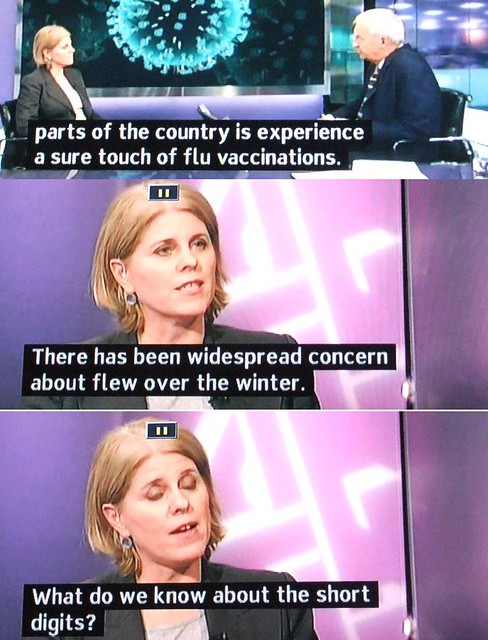
While captions add value, voice recognition software can produce errors. Image source: Gwydion M. Williams via Flickr
Marketers are posting more videos on social media, but they’re not gaining the full benefits of video marketing if they don’t add captions. Facebook’s research shows that 85% of videos are played without sound. Nobody wants to draw attention to themselves while they’re surreptitiously watching a video at work, school or many other public places. They’ll react negatively to both the network and the brand posting the video if a sudden loud sound draws undesired attention.
Key tidbit: Captions deliver the video’s message when audio is turned off. Captions also reinforce audio that’s turned on. Of course, some people like me keep earbuds nearby to listen to sound from social media videos without disturbing others in the office – but most people do not.
How to Add Captions to Social Videos
Adding captions requires two general steps: creating a transcript or manually typing text yourself and adding it to the video. While some use captions and subtitles interchangeably, subtitles are technically a translation of one language into another. Captions are designed for the hearing impaired. Closed captions can be turned off by the viewer; open captions cannot.
Transcribing videos more than a few minutes long quickly becomes tiresome. Instead, you can send the video to one of the many transcription services. Many video editors, such as including Camtasia for Windows, include a speech-to-text feature. It’s important to review the auto-generated transcript for errors.
Accuracy of the transcription can be affected by background noise, overall quality of the audio and other factors, points out Ryan Knott, public engagement specialist for TechSmith.
Another option: Upload the video to YouTube and then download the transcript when it’s completed. Again, be careful to review it for accuracy.
Adding text to the video – at the appropriate times – is the other major step. You can manually type the words into a video editor or use a transcript to copy and paste text. Review your work – perhaps twice – before posting. It’s usually better to use key message captions that deliver the gist of the message rather than a word-for-word transcript.
“Captions certainly are not a new concept for videos on TV, but they are a strategy that is proving more and more effective on all social media platforms,” Knott says.
3Play Media offers video editing, transcription and captioning services, including speech recognitions software and human editing reviews. Speech recognition software seems to be the trend. Kapwing, an online video and editing tool, recently introduced automatic subtitling.
“Automated subtitling is Kapwing’s first technology that uses AI to supplement human creativity. Auto-Subtitling will save social media creators time without sacrificing the clarity and engagement that captions add for video viewers,” says Julia Enthoven at Kapwing Resources.
No Closed Captions on Twitter
Twitter introduced video support in 2016, however it does not support closed captions. “Adding subtitles directly and permanently into your video is the best way to ensure that your message reaches as many people as possible,” Enthoven says.
You can add captions to Twitter videos with the Kapwing Subtitle Maker. Type captions by hand, import an SRT (or “Subrip”) file which stores time-stamped subtitle data, or obtain a machine-generated transcription, then manually review and edit the subtitles.
Resize the video for a 5:4 aspect ratio, ideal for Twitter. Resizing your video lets you put the subtitles on a background above or below your video, a popular format on social media. “Before you click create, watch your video preview at least twice!” Enthoven urges.
Bottom Line: Adding captions to social media videos has practically become a necessity, as most viewers watch videos with the sound muted. Social media marketers have several different methods and online editing tools available to add captions.
William J. Comcowich founded and served as CEO of CyberAlert LLC, the predecessor of Glean.info. He is currently serving as Interim CEO and member of the Board of Directors. Glean.info provides customized media monitoring, media measurement and analytics solutions across all types of traditional and social media.




